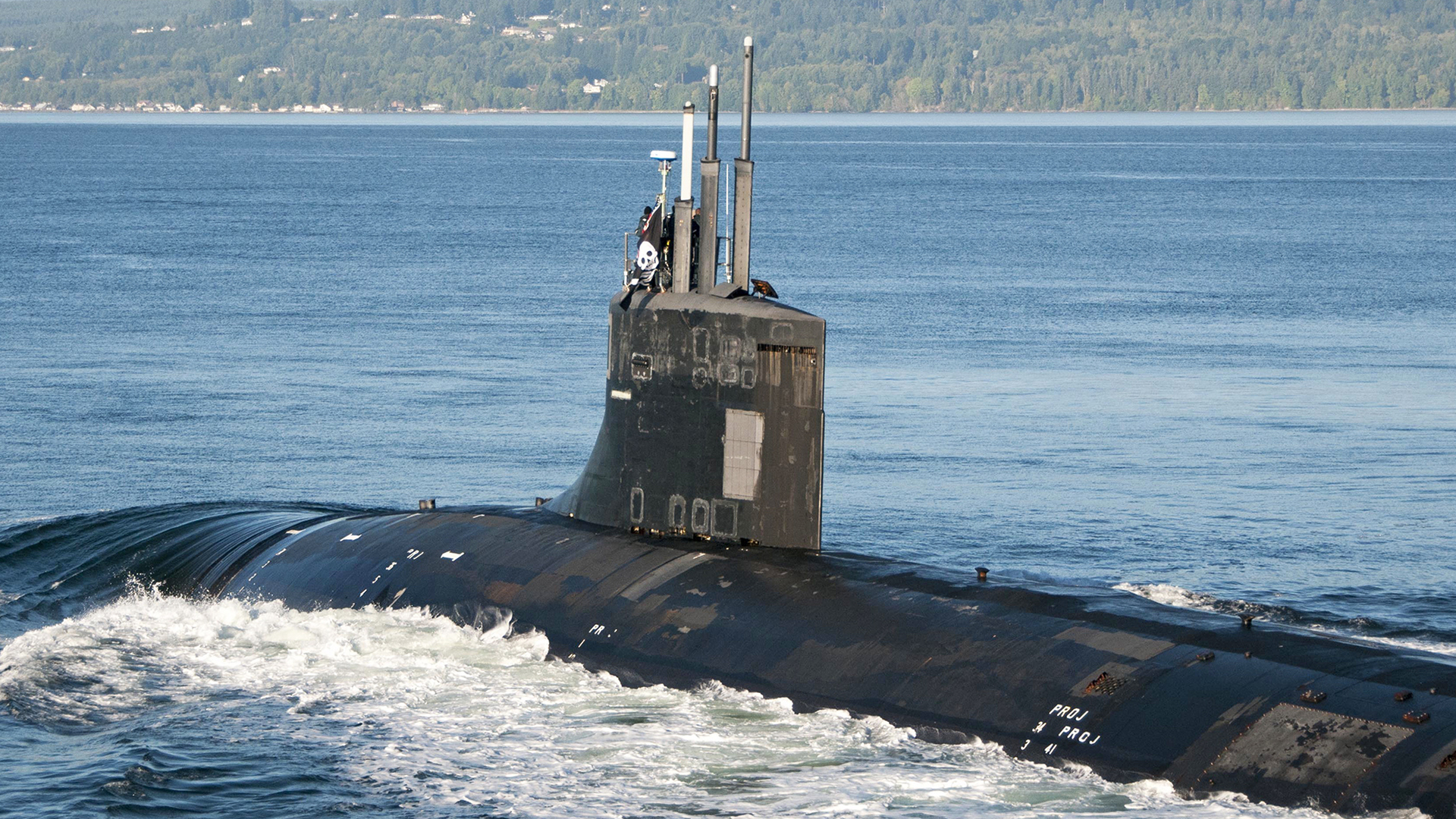Seabed warfare was once an obscure topic mainly reserved for national security circles, espionage thrillers, and websites like the one you are reading. In recent years, it has exploded into the global consciousness. This has been spurred primarily by Russia’s clear designs on being able to wreak havoc on critical undersea infrastructure. China is also active in the area, as well. Now, the events surrounding the Nordstream 2 pipeline have made this realm of warfare a household conversation.
Foreign actors are not alone when it comes to seabed warfare capabilities. The United States also has abilities in this shadowy domain and it looks like it is now working to expand those via a customized version of the Virginia class nuclear fast attack submarine.
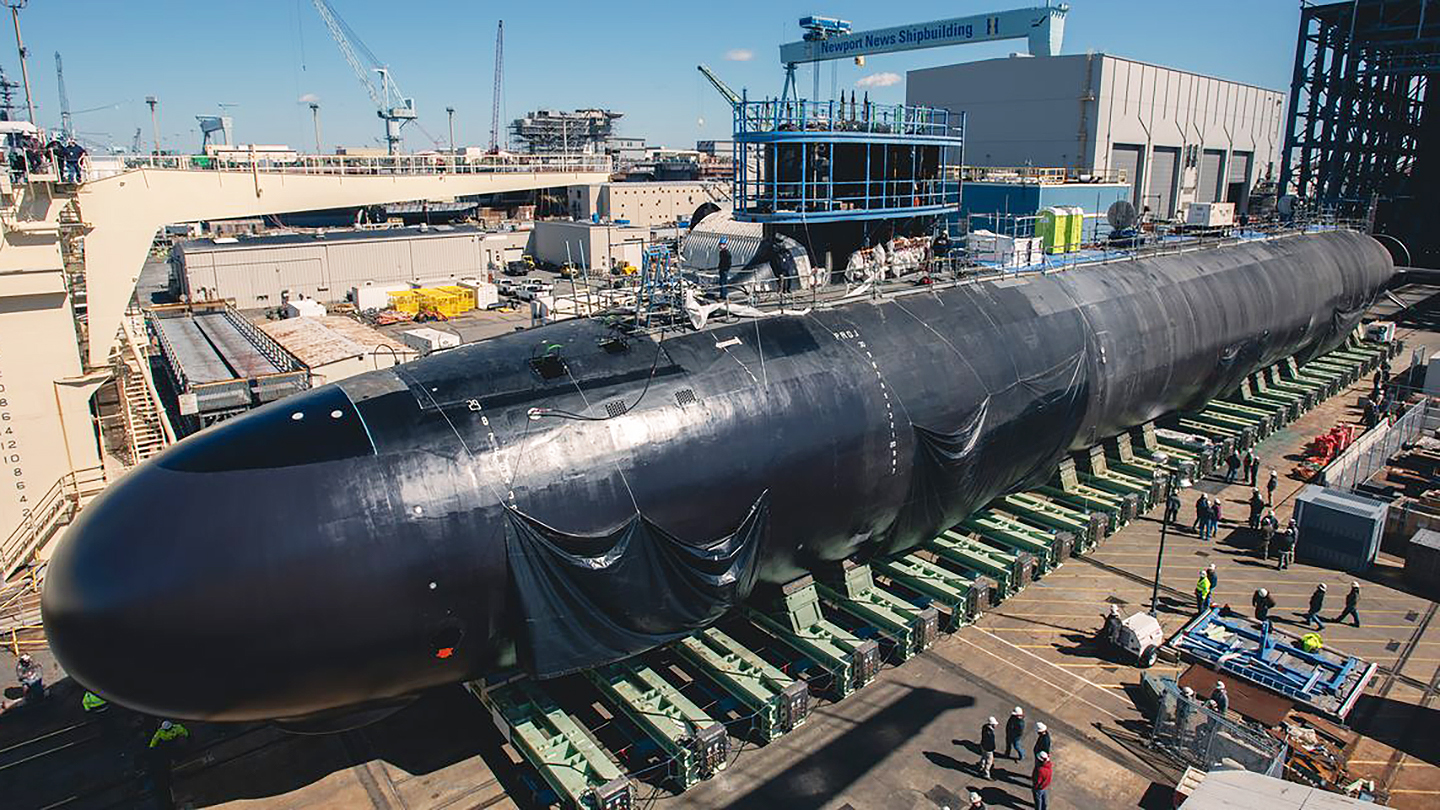
The reality is that seabed warfare goes far beyond cutting or tapping into critical fiber optic communications cables and destroying pipelines. It also includes other forms of espionage.
For many decades, being able to examine. and in some cases recover. items on the seabed has been a critical part of foreign materiel exploitation and intelligence-gathering operations. The same can be said when it comes to a military recovering sensitive tech it lost in order to keep it out of the hands of an adversary. There are incredible stories of these types of feats, including Operation Ivy Bells and Project Azorian, but the vast majority of them remain deeply classified. The deployment of vast seabed sensor networks is another Cold War practice that remains in use today.
These are also legacy mission sets that are well-established. The future of seabed warfare could include countering new and innovative sensor networks, smart guided mines lying in wait, long-endurance unmanned undersea vehicles with seabed docking stations, seabed nuclear reactors, and many more types of threats and innovations. In other words, the nature of seabed warfare is rapidly changing and the ability to take part in it is as well.
Russia, in particular, has invested very heavily in these capabilities with multiple types of special mission submarines, the newest of which is the longest in its inventory. Russia also has a fleet of auxiliary ships that deal directly with the manipulation of deep underwater objects.
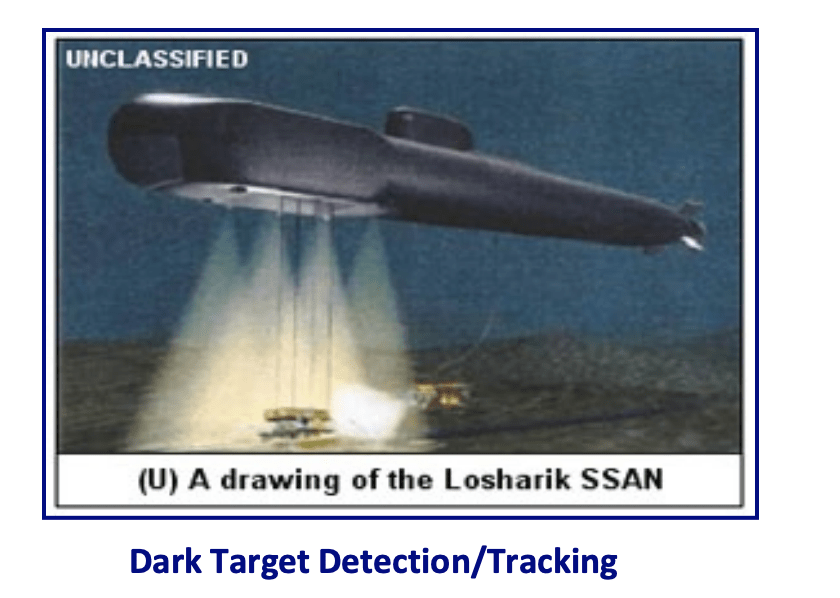
Today, the U.S. already has one submarine that was purpose-built for these types of tasks, the highly modified Seawolf class USS Jimmy Carter (SSN-23), which you can read more about here and here. This boat, which is markedly longer than the two other Seawolf class submarines, is among America’s most prized weapons and is known to have accomplished critical but highly classified operations in its now nearly 20-year-long career.

Now there appears to be a new seabed warfare super-sub in the works in the form of the aforementioned one-off Virginia class variant.
In a slide (seen at 22:00 in the video below) from a presentation given to the Connecticut Business and Industry Alliance’s “Economic Summit + Outlook” by Electric Boat president Kevin Graney on Jan. 21, 2022, we see a rendering of a new Virginia class variant. In the presentation, he details the future evolution of the Virginia class SSN and clearly states that a one-of-a-kind seabed warfare capable sub-type is being developed.
Graney says: “We’re developing in the third picture a seabed warfare variant and this ship is designed to interact with the sea floor. And this design we’ll repurpose some of those missile tubes that I refer to in the VPM [Virginia Payload Module] design to perform those missions.”

This makes great sense as the Jimmy Carter had to be deeply modified with a 100-foot hull plug to create a 2,500-ton displacement middle section, which forms its ‘multi-mission platform’ (MMP). This is a highly adaptable area capable of deploying remotely operated vehicles (ROVs) and other specialized equipment. It also features a reconfigurable command and control room, as well as storage spaces and other special missionized equipment.
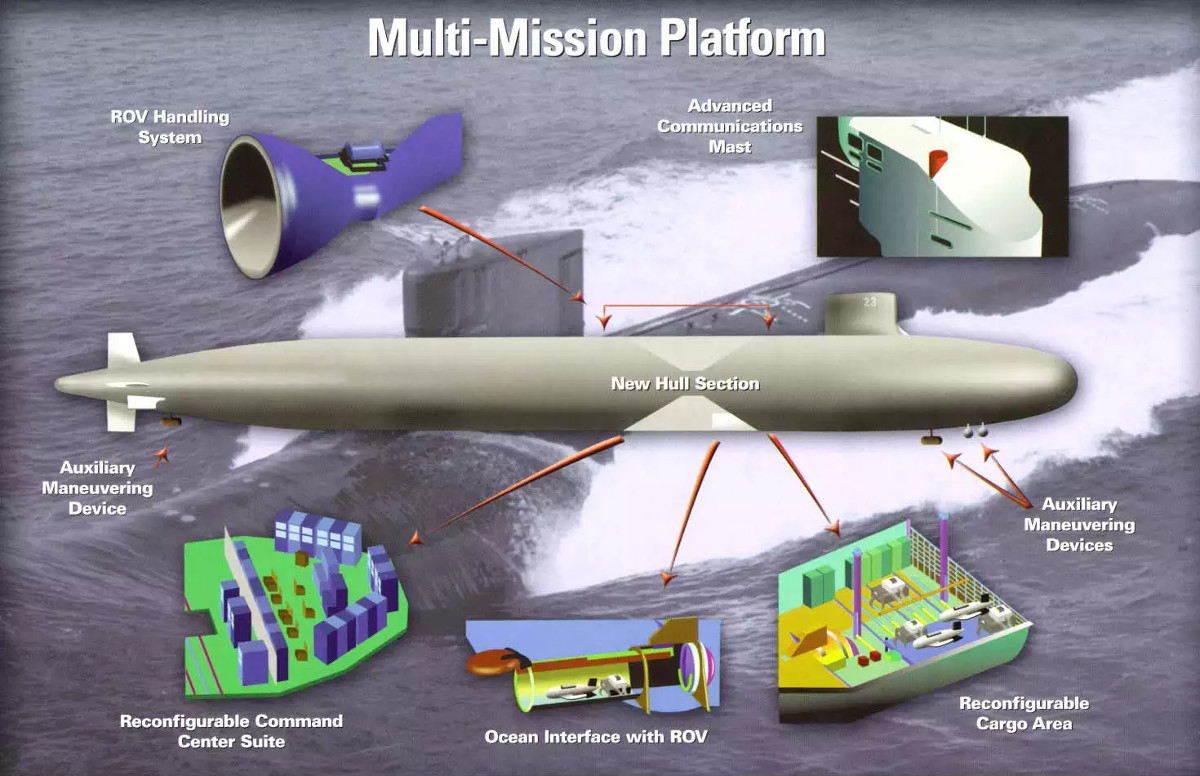
The Virginia Payload Module, which will be part of upcoming Block V Virginia class boats, features a similar hull plug that stretches 84 feet that would be adapted to the seabed warfare role instead of hauling around cruise, hypersonic, and other missiles. There would have to be many other modifications, as well, especially considering that the boat will have to be able to adapt to new technologies for decades to come. Maneuvering thrusters and seabed landing abilities would also likely be part of the modification.
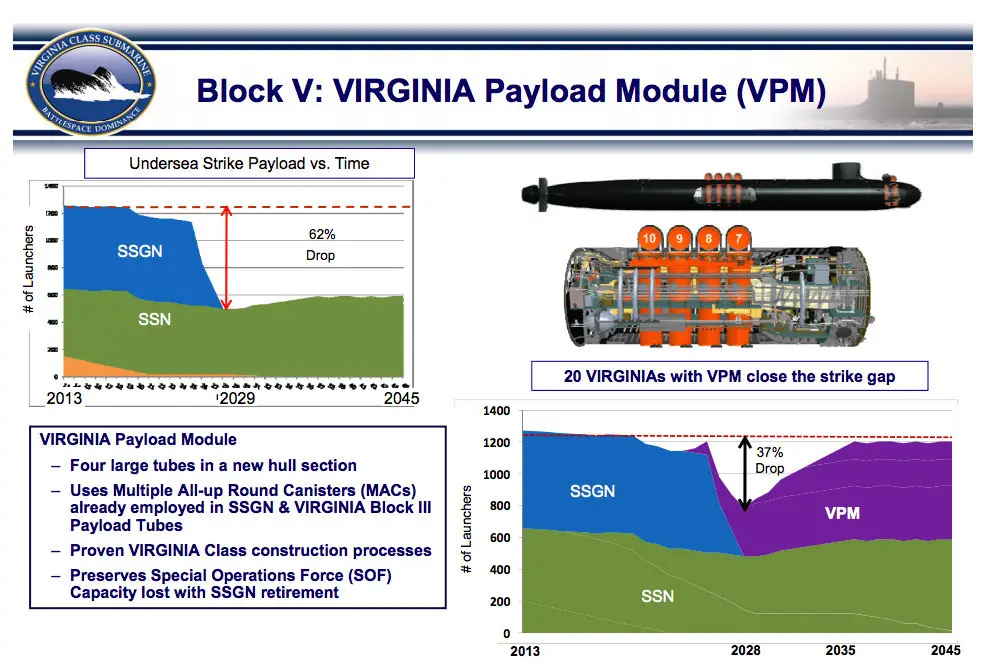
What isn’t clear is if this new boat would be built to replace the Jimmy Carter or if it would augment it, at least for some period of time. The Jimmy Carter is the youngest of the three Seawolf class boats and still has plenty of service life left, but it is definitely middle-aged in terms of nuclear submarine lifespans.
The Navy’s latest budget request for the 2024 Fiscal Year, released last month, clearly outlines that funding is being requested for this unique variant. It also gives information on what its adapted mission section will be called:
“FY 2024 funds two VIRGINIA Class Submarines (VCS) in different configurations; one is the Modified VIRGINIA Class Subsea and Seabed Warfare (Mod VA SSW) and the second is Virginia Payload Module (VPM); funding also provides Advance Procurement (AP) for future SSNs and EOQ [economic order quantities] funds for a future multi-year procurement.”
So it looks like the modification for this subclass is called Virginia Subsea and Seabed Warfare or Mod VA SSW.
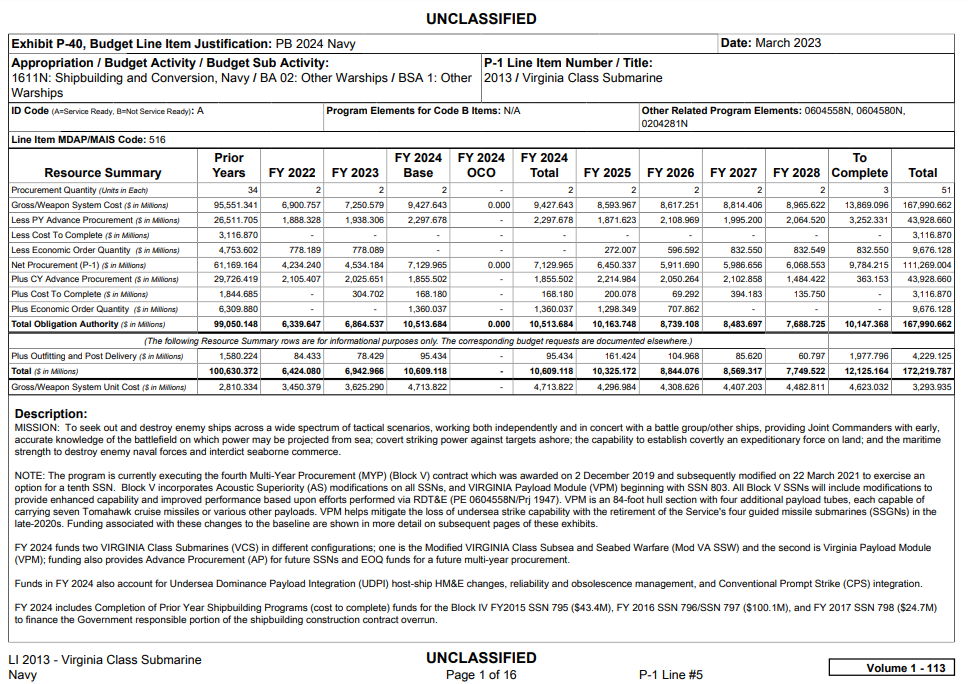
It isn’t clear exactly how long it would take to fully develop and deploy this new Virginia sub-class, but the Navy expects to take delivery of the first Block V boat in 2028. So, one would think it may be possible by end of the decade or early in the 2030s, depending on how far along the concept is already, for the modified Block V sub-type to arrive. If it were to enter service in 2030, the USS Jimmy Carter would be 25 years old at that time.
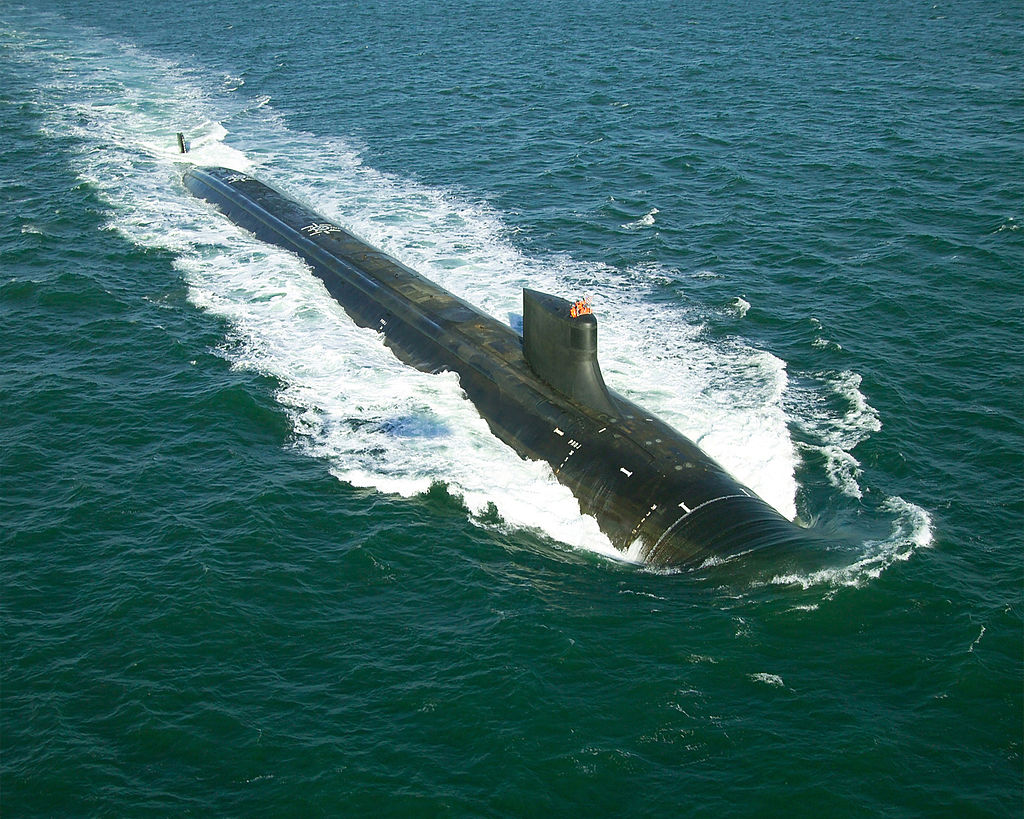
The Navy’s Los Angeles class attack submarines generally served for around 30 years, with some going longer, just for comparison. The Seawolf class was designed for at least 30 years of service and USS Connecticut, the second boat in the class that was put into service in 1998, is being rebuilt at great cost, an operation that will take years, after a collision with a seamount in the Fall of 2021. This just gives an idea of how valuable these three boats are, even as they enter the back half of their careers, as well as how they are likely to remain in service for some time.
It wouldn’t be all that surprising if the Navy ends up ordering an additional boat of this unique configuration as seabed warfare becomes a growing aspect of the undersea battlespace. Putting an even greater premium on spying capabilities across submarine fleets is already something of a trend.
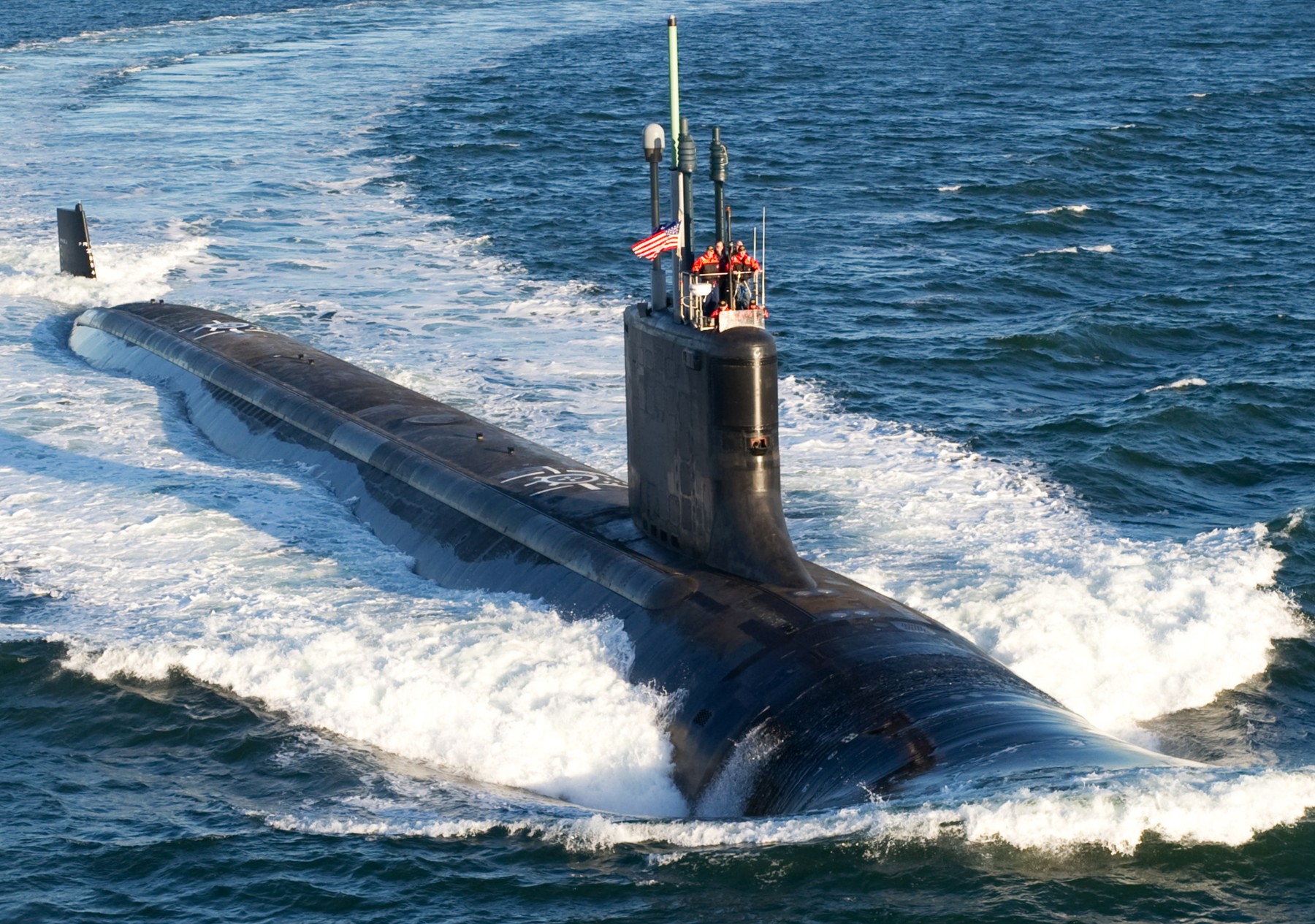
Building more than one of these special boats would make even more sense if they still retain their core spy and undersea and surface attack capabilities, at least to some degree, as the Jimmy Carter does.
Regardless, it looks like the fabled USS Jimmy Carter is set to get a companion and possibly a replacement in the not-too-distant future.
Author’s note: A big thanks to @lfx160219 for bringing the video to our attention.
Contact the author: tyler@thedrive.com
